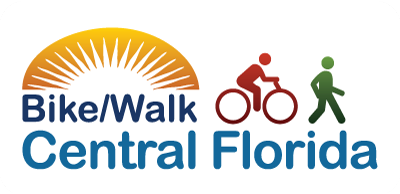Exciting news: just in time for Florida Bike Month, the City of Orlando’s Bicycle Beltway project moved one step closer toward building a completely connected, bicycle-friendly downtown. The City shared updates on the Downtown Gap Study at its final project visioning team public meeting and took feedback on the preliminary concept plan on March 6.

The Orlando Bicycle Beltway is an infrastructure upgrade that will serve as a central hub for the city’s network of over 45 miles of off-street trails, 50-plus miles of signed routes and 265 miles of bike lanes. The City’s goal is to create a continuous 8.5-mile loop by closing gaps between existing trails and routes. BWCF has kept you up to date with developments of this project in the past, from when the concept was first created, to identification of the five major gaps, to mapping the best path for the Downtown Connector Trail.
The downtown gap the city set out to address is between the Downtown Connector Trail (under construction this summer) and Gertrude’s Walk. A study to determine the best route through the Central Business and South Eola Districts was conducted last summer. And now, the project has moved from the study phase into recommendations for preferred alignments.
When choosing a route for a bike trail, there’s a lot to consider. Just because a proposed route connects the dots doesn’t mean it’s the right fit. Safety, connections to parks, the amount of streetscaping needed, and the impact on street parking and truck routes are all things that need to be taken into account.

Project leaders said there were two options within the refined study area to cross under SR408 from the Downtown Connector Trail along Anderson St. Each option — along Mills Ave. or Summerlin Ave. — has pros and cons. While both routes provide opportunities for a shared use path or cycle track connection to Gertrude’s walk, Summerlin could connect several streets more with potential to continue to the proposed Robinson St. cycle track.
During the public meeting, HDR, the engineering firm spearheading the project, presented several alignment options utilizing the west side of Summerlin Ave. to connect to the Downtown Connector Trail and go through Constitution Green Park towards Eola Drive. After considering various street routes and hybrid options (connecting two or more proposed streets), they came to a final proposition: the route to connect the Downtown Connector Trail and Gertrude’s Walk will run through Pine St.
This option was chosen as it best fit the city’s key principles for alignment: connectivity, wayfinding, safety, directness, livability and feasibility. Participants in the meeting were shown images of what the Pine St. track would look like when constructed and gave input on design features like whether to use brick vs. asphalt or to make the bike lane protected by adding a grass median.

The next step for the city and the project is to procure a design engineer to create the construction plans for the Pine St. cycle track. City of Orlando officials say they’re hoping to roll out a completed design plan this summer.

